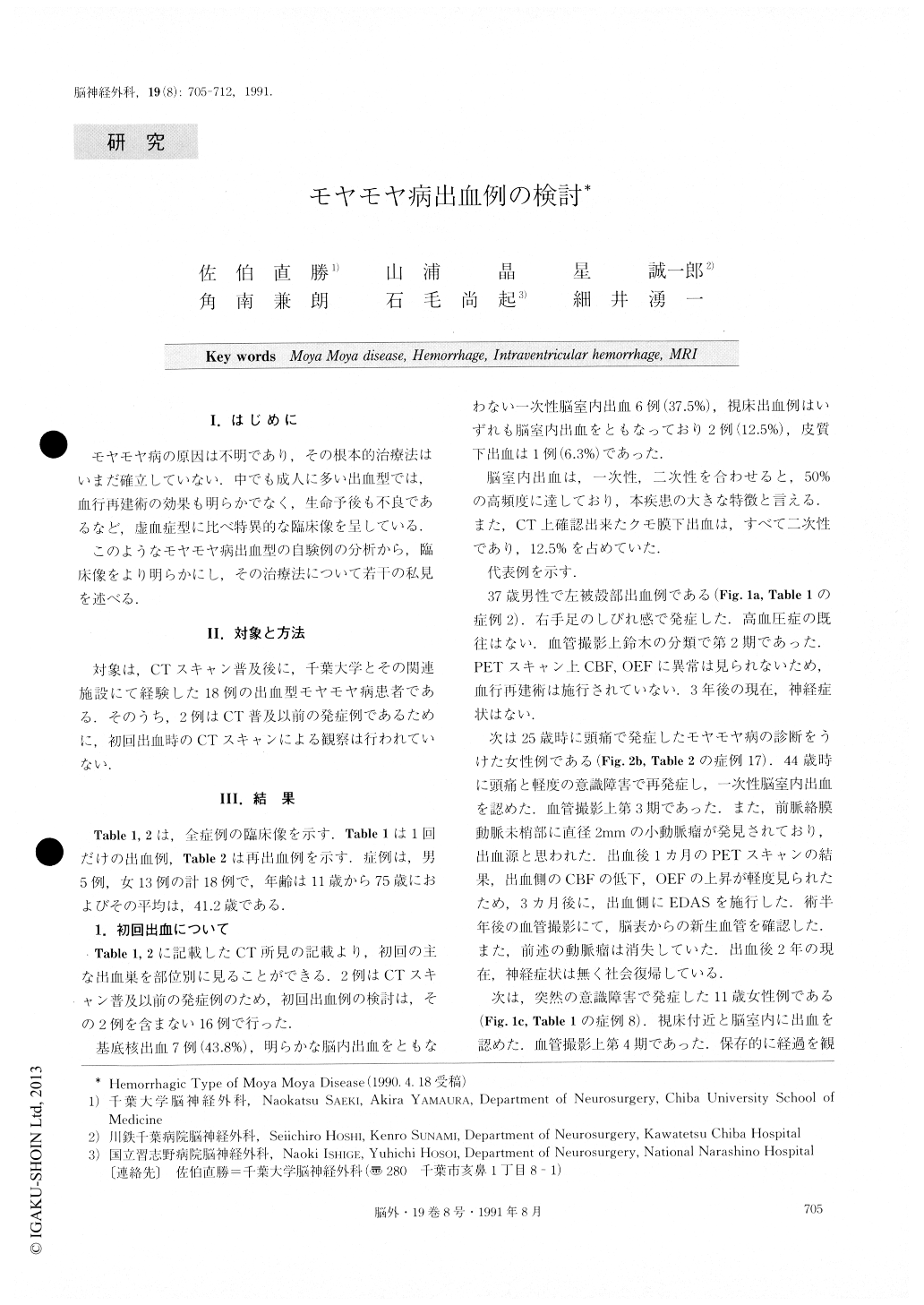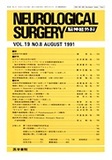Japanese
English
- 有料閲覧
- Abstract 文献概要
- 1ページ目 Look Inside
I.はじめに
モヤモヤ病の原因は不明であり,その根本的治療法はいまだ確立していない.中でも成人に多い出血型では,血行再建術の効果も明らかでなく,生命予後も不良であるなど,虚血症型に比べ特異的な臨床像を呈している.
このようなモヤモヤ病出血型の自験例の分析から,臨床像をより明らかにし,その治療法について若干の私見を述べる.
Abstract
Clinical picture of Moya Moya Disease was analyzed in 18 cases. In 16 cases whose CT scan were available at the time of the first bleeding, hematoma at the basal ganglia was noted in 43.8%, primary ventricular hemor-rhage in 37.5%, thalamic hemorrhage with ventricular rupture in 12.5% and subcortical hemorrhage in 6.3%. The frequencies shown above were well correlated to previous reports. In MRI performed 1 year or more af-ter primary ventricular hemorrhage, the primary bleed-ing site was demonstrated at the lateral wall of the lateral ventricle, in proton weighted and T2 weighted images. MRI can detect the site of old bleeding points and its chronological change if the study is repeated. In a follow-up period of 5.4 years, 27.8% of the cases had rebleeding one or more times. As a result, good outcome was noted in 72.2% after the 1st bleeding, and in 55.6% after re-bleedings. Death occurred in 5.6% of patients after the 1st bleeding and in 22.2% after furth-er rebleeding. Rebleeding worsened the outcome. Therefore, prevenion of rebleeding is important. From a therapeutic viewpoint, although a direct rela-tion between rebleeding and untreated hypertension could not be established, blood pressure control is cri-tical at both the acute and the chronic stages.
Reconstructive vascular surgery is a recommendable method for properly selected patients.

Copyright © 1991, Igaku-Shoin Ltd. All rights reserved.


